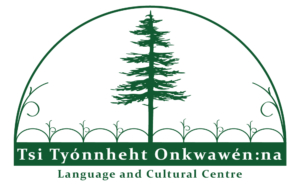Ne ki: Wathró:ris:
TTO tánon ne tyonkwatenróhon yonkwayo’tátye ayakwanonhsón:ni tánon aontehnhotón:ko ne Kenhtè:ke Owén:na tánon Tsi Niyonkwarihó:ten Yoterihwahtén:tyon. Kí yóskats Net Zero nón:we Salmon River Road ne Kenhtè:ke Mohawk Territory, enkayén:take ne tsi nón:we ahonteweyénste, yekhonnyátha, ahatiráhsthake, tánon ne onkwehshón:’a ahontya’tarohró:ksheke tsi ní:yore ne 150 niyonkwé:take ne tsi naho’ténshon rotiyó’te, thénon aonterihwahtén:ti tánon ahonten’nikonhró:ri. Kí:ken tsi nón:we tenstyatyérenke ne tsi niyohtón:nen Kanonhsésne tánon átste nonkwá:ti nahò:ten aón:ton ahonteweyénste.
Introduction
TTO and our partners are currently working to build and open the Kenhtè:ke Language and Cultural Centre. This exciting new Net Zero centre will be located on Salmon River Road in Tyendinaga Mohawk Territory, and will be home to classrooms, a teaching kitchen, an art studio, and a gathering space for up to 150 people for programs, events and celebrations. The site will also include a replica traditional longhouse and outdoor learning opportunities.

